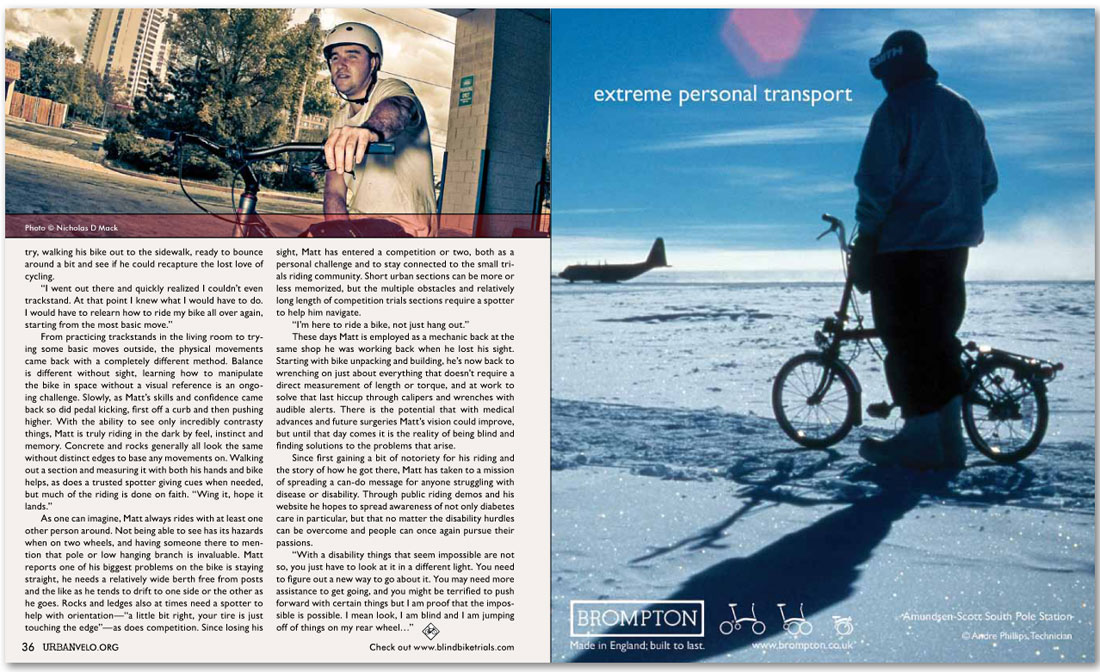


try, walking his bike out to the sidewalk, ready to bounce around a bit and see if he could recapture the lost love of cycling.
“I went out there and quickly realized I couldn’t even trackstand. At that point I knew what I would have to do. I would have to relearn how to ride my bike all over again, starting from the most basic move.”
From practicing trackstands in the living room to trying some basic moves outside, the physical movements came back with a completely different method. Balance is different without sight, learning how to manipulate the bike in space without a visual reference is an ongoing challenge. Slowly, as Matt’s skills and confidence came back so did pedal kicking, first off a curb and then pushing higher. With the ability to see only incredibly contrasty things, Matt is truly riding in the dark by feel, instinct and memory. Concrete and rocks generally all look the same without distinct edges to base any movements on. Walking out a section and measuring it with both his hands and bike helps, as does a trusted spotter giving cues when needed, but much of the riding is done on faith. “Wing it, hope it lands.”
As one can imagine, Matt always rides with at least one other person around. Not being able to see has its hazards when on two wheels, and having someone there to mention that pole or low hanging branch is invaluable. Matt reports one of his biggest problems on the bike is staying straight, he needs a relatively wide berth free from posts and the like as he tends to drift to one side or the other as he goes. Rocks and ledges also at times need a spotter to help with orientation—“a little bit right, your tire is just touching the edge”—as does competition. Since losing his sight, Matt has entered a competition or two, both as a personal challenge and to stay connected to the small trials riding community. Short urban sections can be more or less memorized, but the multiple obstacles and relatively long length of competition trials sections require a spotter to help him navigate.
“I’m here to ride a bike, not just hang out.”
These days Matt is employed as a mechanic back at the same shop he was working back when he lost his sight. Starting with bike unpacking and building, he’s now back to wrenching on just about everything that doesn’t require a direct measurement of length or torque, and at work to solve that last hiccup through calipers and wrenches with audible alerts. There is the potential that with medical advances and future surgeries Matt’s vision could improve, but until that day comes it is the reality of being blind and finding solutions to the problems that arise.
Since first gaining a bit of notoriety for his riding and the story of how he got there, Matt has taken to a mission of spreading a can-do message for anyone struggling with disease or disability. Through public riding demos and his website he hopes to spread awareness of not only diabetes care in particular, but that no matter the disability hurdles can be overcome and people can once again pursue their passions.
“With a disability things that seem impossible are not so, you just have to look at it in a different light. You need to figure out a new way to go about it. You may need more assistance to get going, and you might be terrified to push forward with certain things but I am proof that the impossible is possible. I mean look, I am blind and I am jumping off of things on my rear wheel…”
Check out www.blindbiketrials.com
Photo © Nicholas D Mack - www.nicholasdmack.com